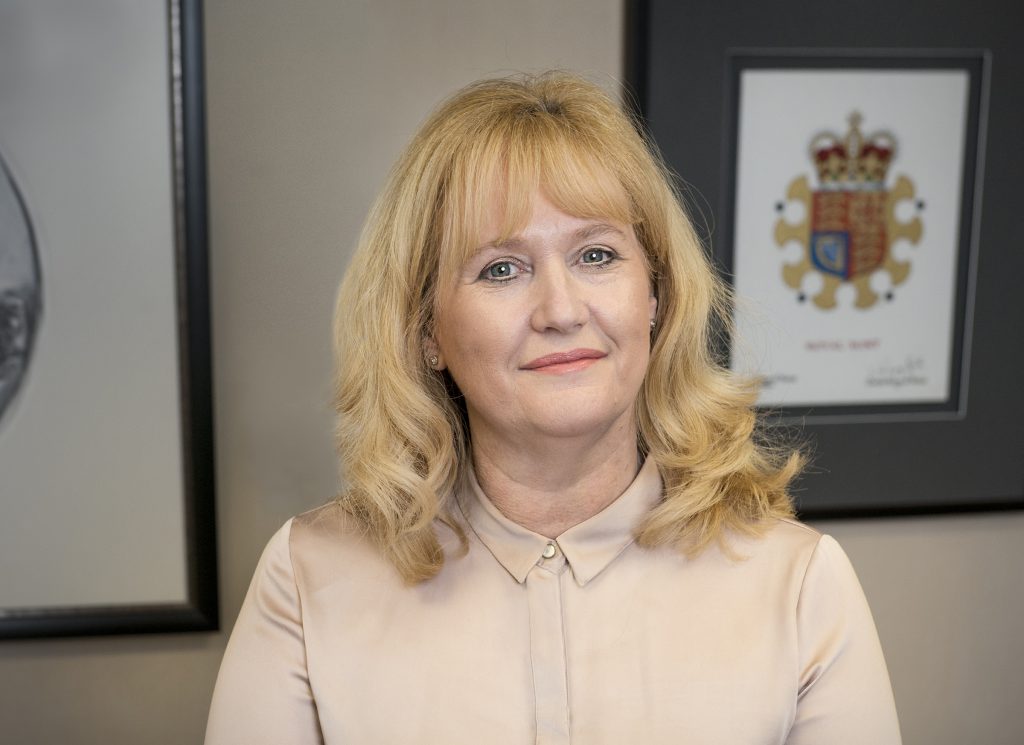The U.K.’s Royal Mint appointed Anne Jessopp as its new chief executive officer and deputy mint master earlier this week.
On a visit to the Royal Mint, exchequer secretary Robert Jenrick officially confirmed the appointment of Jessopp, who’s the first female to take up the role in the mint’s 1,100-year history. Jessopp is slated to lead work to provide Britain with secure, cutting-edge currency while also developing the commemorative coin and bullion arms of the business.
“I am delighted to be appointed to lead this unique and important British organization. The Royal Mint has an impressive history of over 1,100 years and its longevity is due to its ability to adapt as society changes. This was never truer than today, as we reinterpret The Royal Mint for the 21st century, building on the values that have been at the heart of the organization throughout our history—authenticity, security, precious metals, craftsmanship and design,” said Jessop.
“I have had the privilege to work for The Royal Mint for almost 10 years and it is testament to the great colleagues and opportunities I have had, that I have been able to develop the skills that enable me to take on this role”.
Jenrick welcomed the appointment and said Jessopp “brings a wealth of expertise to this role. With her decade of experience at the Royal Mint, I am confident she will ensure the UK continues to have the most secure currency in the world, and our coins are loved and collected the world over. It may have taken over 1,000 years, but the Mint is now finally led by a woman, and I am certain Anne will do a great job.”
DEPUTY MASTER OF THE MINT
As chief executive of the Royal Mint, Jessop will be tasked with running the Great British institution, which produces up to 90 million coins every week. At the top of her in-tray will be overseeing the introduction of the new 50-pence coin—announced earlier this month—to mark the centenary celebrations of women’s suffrage.
Her official position as deputy mint master is one that is steeped in history. Her first ceremonial role will be to lead the annual Trial of the Pyx.
First held in 1282, the Trial of the Pyx tests the integrity of the nation’s coins to ensure they are the proper weight and size and contain the right amount of precious metals. Every February, coins of each denomination struck by the Royal Mint are selected at random and locked away in the Pyx chests.
In a ceremony that has not changed since before Henry VIII’s reign, the deputy mint master brings these chests to London’s Goldsmiths’ Hall, where the coins are checked by an independent jury. The jury consists of leaders from the financial world and six assayers from the Worshipful Company of Goldsmiths, who—wearing traditional red robes—put the coins to the test.
After two months of rigorous testing, the trial reconvenes and the Queen’s Remembrancer asks the jury for its verdict. In May, this verdict will be given in the presence of the deputy master of the Royal Mint and the chancellor of the exchequer (or a representative).
LOSING A HAND
Remarkably, the history books reveal if the coins fail the test, the chancellor of the exchequer, who is the ceremonial master of the mint, risks losing a hand as punishment.
In the trial’s long history, 94 minters have had their right hands cut off by order of the King; however, this has not happened for hundreds of years.

